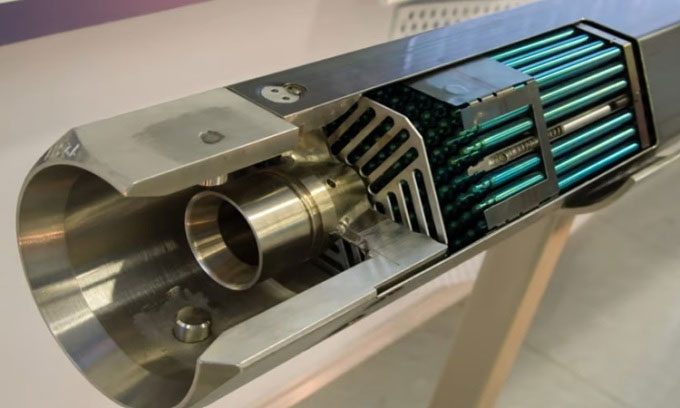The Deep Fission pressurized water reactor is located deep underground, eliminating the need for pressure vessels, a pressurization system, and a reactor building, thereby reducing costs and enhancing safety.
The startup Deep Fission has discovered a new approach to addressing the economic and safety challenges of nuclear energy. Their idea is to construct a reactor that is less than 76 cm wide and place it in a borehole 1.6 km deep, as reported by New Atlas on August 27.

Deep Fission’s reactor will utilize some components similar to conventional reactors. (Image: Deep Fission).
Nuclear energy has long been considered a promising source of power for humanity due to its potential to provide limitless energy. However, economic and safety concerns, along with community opposition, have hindered the development of this energy source. The construction costs of nuclear power plants are exceedingly high, largely unrelated to the nuclear power production technology itself. Nuclear fuel, even when factoring in all processing costs, is priced at just $1,663 per kg. Given the extremely high energy density of nuclear fuel and the continuous reduction in fuel costs, this technology is becoming increasingly efficient.
The actual costs arise from the civil engineering required to maintain the reactor and protect the environment in the event of an accident. The reactor pressure vessel may require steel that is 2.4 m thick, and the reactor building structure can be up to 2 m long, built from reinforced concrete. Additionally, costs include foundations, support equipment, pressurization systems, cooling systems, and more.
Although still in the conceptual phase, Deep Fission plans to build a small reactor based on the conventional pressurized water reactor (PWR) that can be placed into a borehole. Similar to PWRs, Deep Fission’s reactor will operate at a pressure of 160 atmospheres and a temperature of 315 degrees Celsius. The design will be significantly simplified and will not require expensive civil engineering due to the reactor being lowered along the borehole to a depth of 1.6 km. Two pipes will connect to the reactor, one for water input and one for steam output from the steam generation section.
The new reactor will use the same type of fuel and many components similar to PWRs, but will have virtually no moving parts aside from remotely operated control rods. Due to the 1.6 km high water column, it will pressurize the reactor through its immense weight, thus eliminating the need for a pressurization system, and the cooling system will be entirely passive. Furthermore, the design, being encased by hard rock deep below the groundwater level, will also not require a reactor building.
According to the company, if the reactor requires inspection or maintenance, engineers can pull it to the surface using cables in about 1 to 2 hours. The reactor’s design also includes self-limiting features. In the event of overheating, the nuclear reaction will automatically slow down. Although the idea has a long way to go before it becomes a reality, Deep Fission has begun preparations to apply for licensing from the Department of Energy to further develop the system and find the most suitable geographical location for a pilot plant.





















































